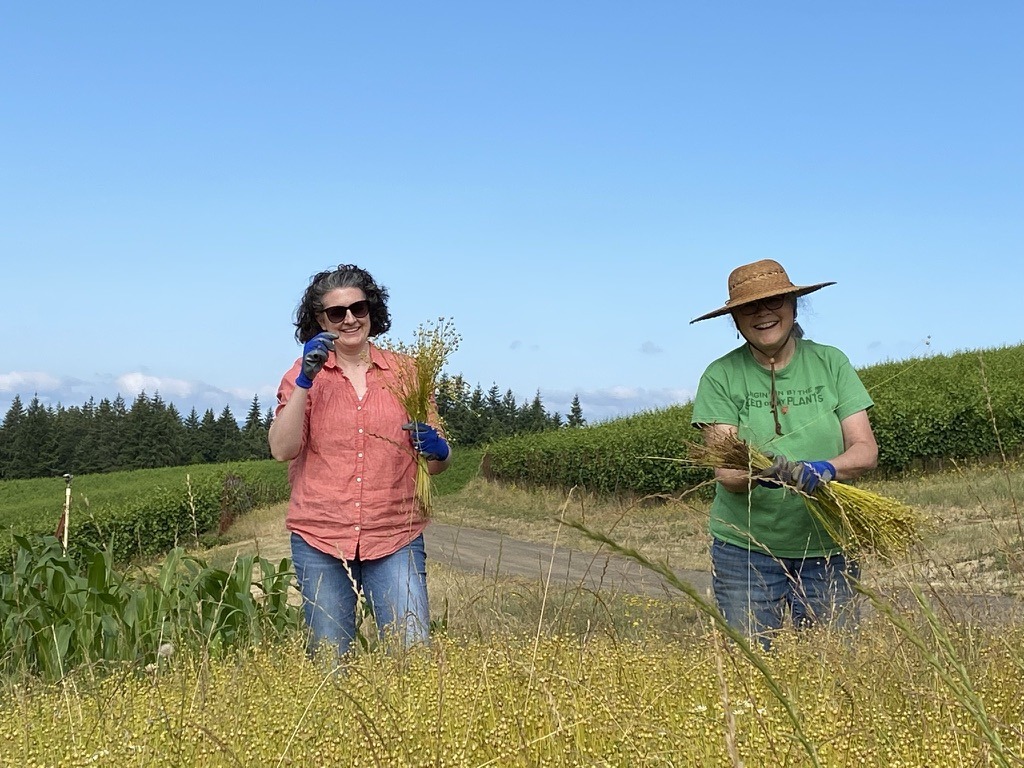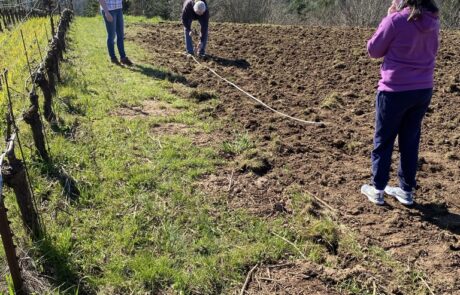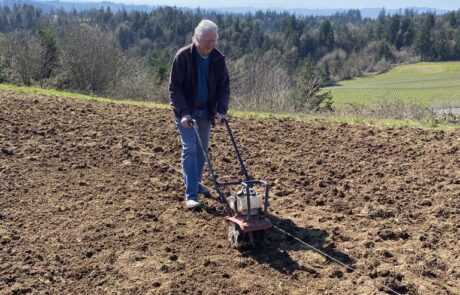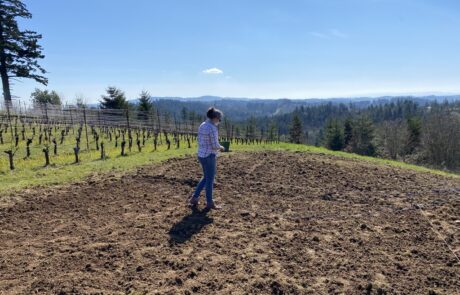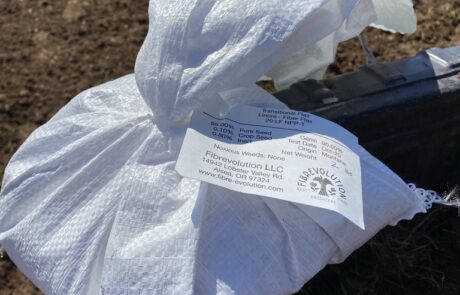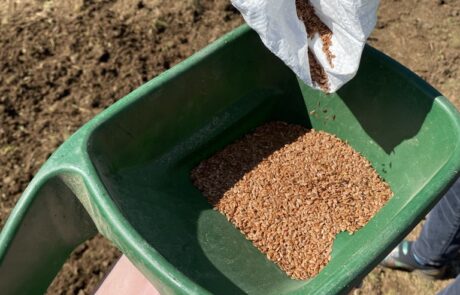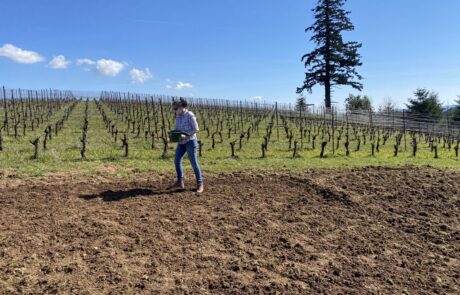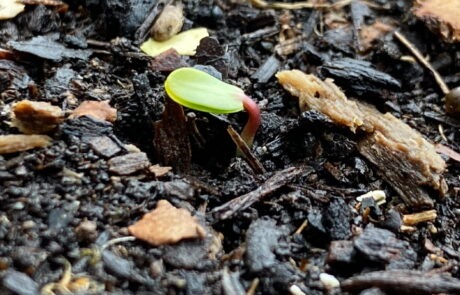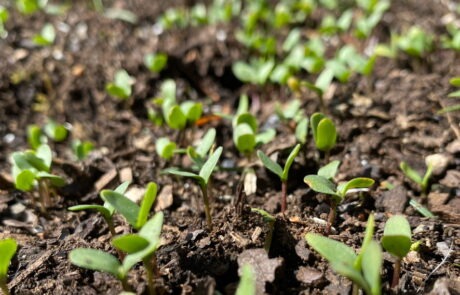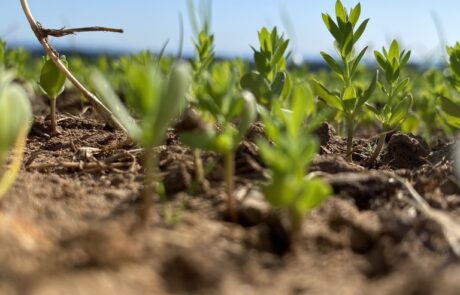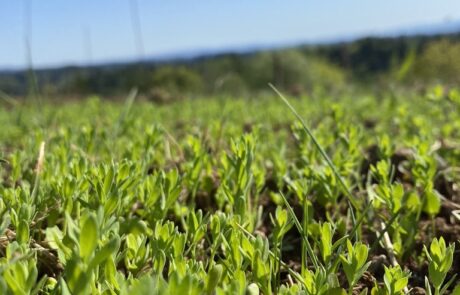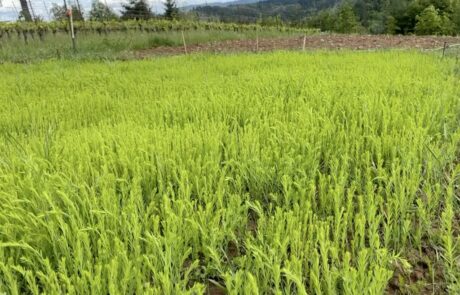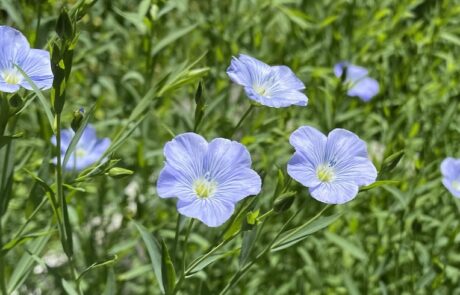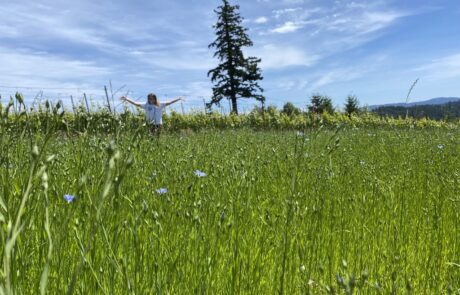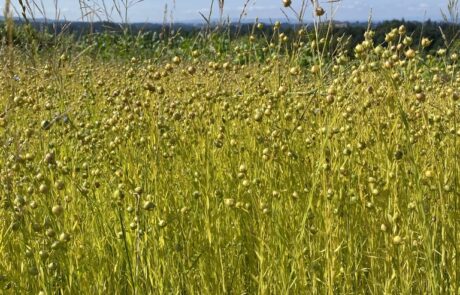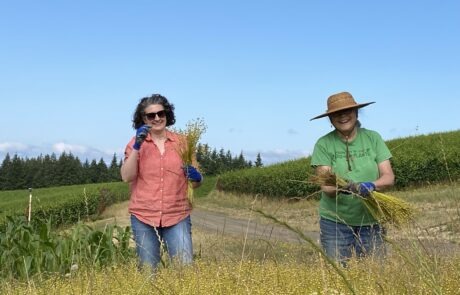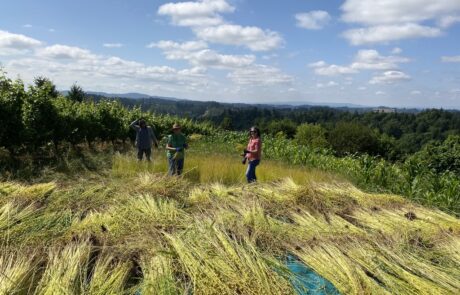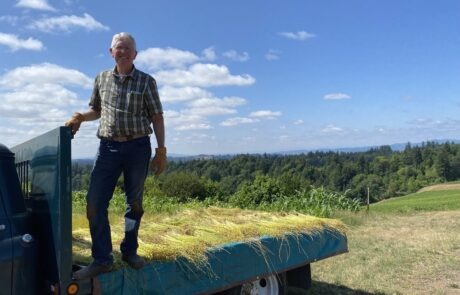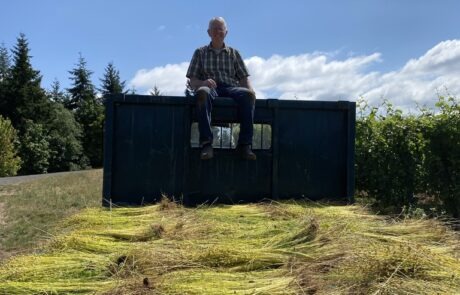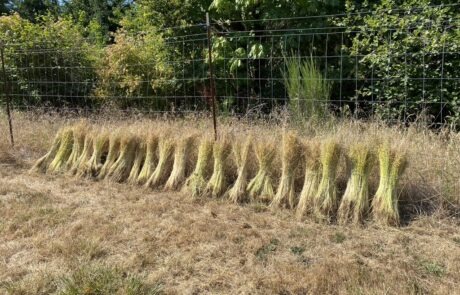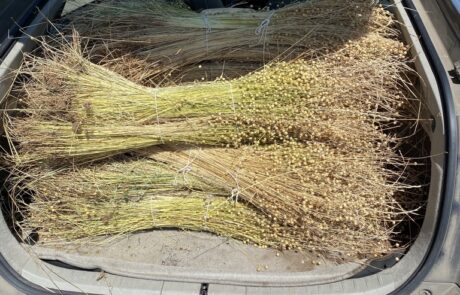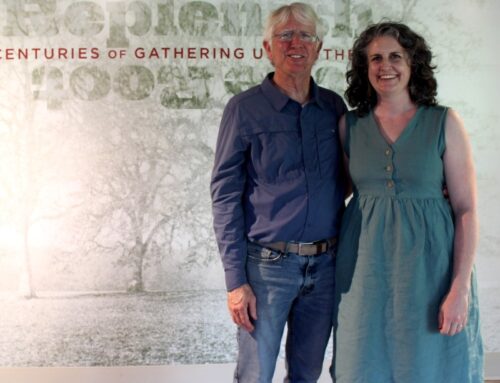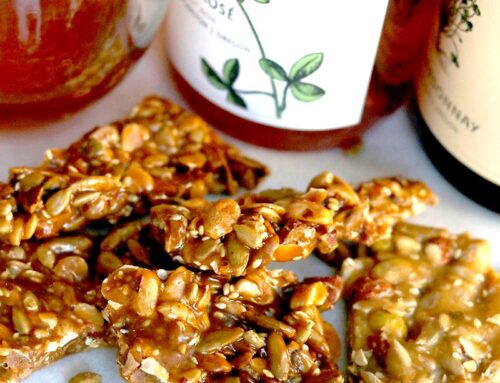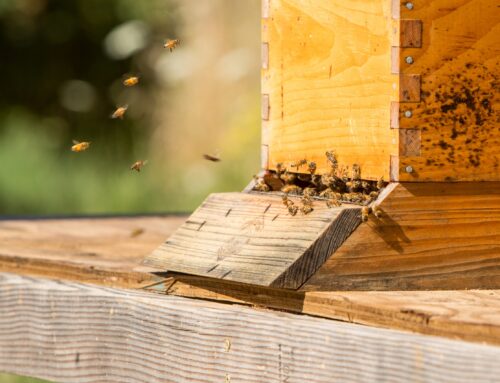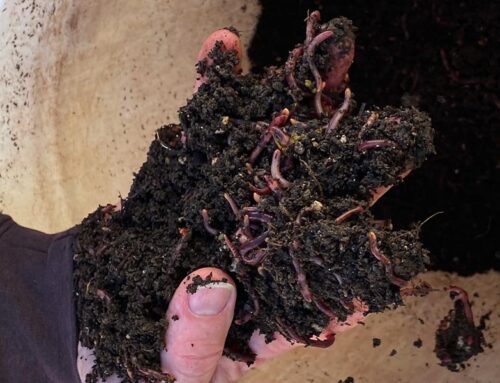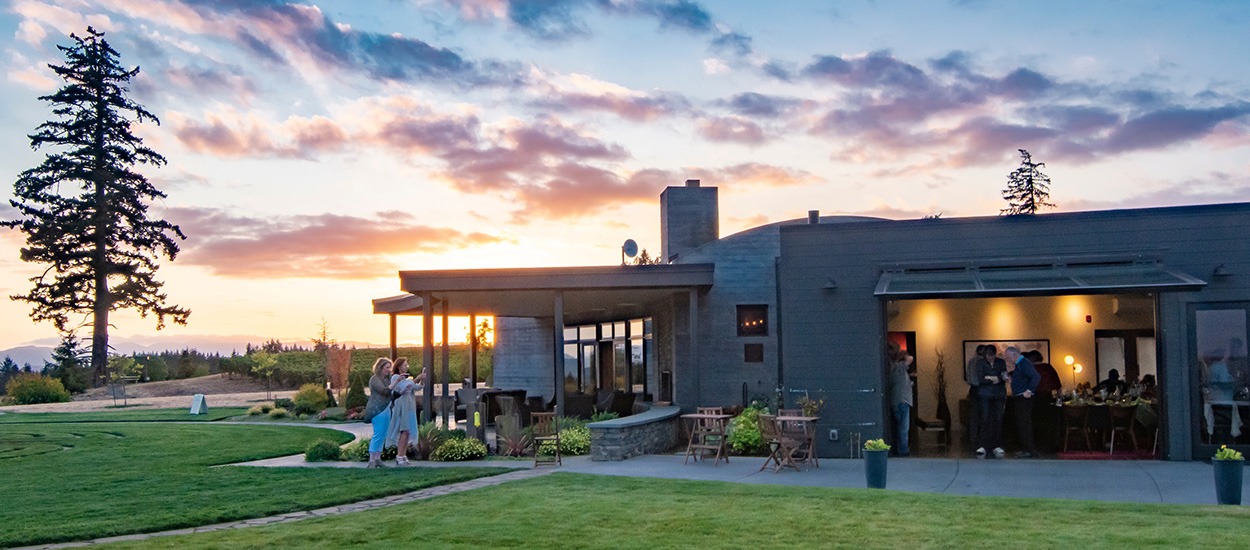FLAX AND FAIRSING VINEYARD
In March of 2021, next to a block of our mature Chardonnay vines, nearly an acre of fertile Fairsing soil welcomed our first plot of fiber flax.
Tended by Meara McNally Butler, General Manager at Fairsing, the fiber flax variety planted is taller than flax grown for consumption (flax seed). There are select flax cultivars renowned for their tall, unbranched stalks, resulting in luxurious bast fiber of superior length.
THE PLOT THICKENS
With a section of land prepped for planting, two pounds of Linore fiber flax seed from the supportive folks at Fibrevolution were broadcast into the soil.
Within a week many seeds germinated and the fast 100 day growth cycle of our fiber flax was underway.
While oil seed flax and flax fiber are the same species, they are bred and grown for different purposes.
For fiber flax, seeds are sown very close together to encourage straight vertical growth with little branching. Tight flax seeding yields taller stalks with longer, luxurious interior fibers.
OUT OF THE BLUE
By mid June, our flax showed it true colors and treated us to a thick, waving field of light blue blooms. At nearly two feet tall with beautiful flowering stems, the flax signaled a harvest within 30 days.
With the help of many Fairsing folks, our plot was hand-harvested the first week of July.
To harvest flax, the plant stem is pulled from the ground, bundled into swathes (or shooks), and dried before processing (for up to a year).
The optimal timing to harvest flax is after flowering has stopped and seeds inside bolls on the plant’s stem are immature.
After pulling, the seeds mature as the stalks are left to dry out. Once dried and ready for processing (or storage), the golden-colored flax seed bolls are shaken (rippled) from the straw stems and the seeds collected for the next planting.
WELL DRESSED
Extracting fiber from dried flax stems is a manual process referred to as “dressing”.
Dried flax bundles are first crushed (braking) to shatter and splinter the woody stalk exposing the fibrous interior.
The braked flax stalks are then scutched or vigorously whacked with a wooden blade to remove remaining stem material.
After scutching, the fiber is hackled or combed through sharp tines to ultimately separate shorter fibers (tow) from the longer desirable fibers (line).
Once thoroughly combed, the fiber is aligned lengthwise, readied for spinning into thread and subsequently woven into cloth.
SUSTAINABLE AND STRONG
Oregon’s Willamette Valley has excellent flax-growing conditions and linen production was once a significant industry (peaking during WWII).
Fabrics made of linen are valued for their light weight, beauty, durability, and strength (which increases by 20 percent when wet).
In addition to generating gorgeous textiles, flax is one of the most sustainable natural fibers in the world.
Flax requires little water over its fast 100 day growth cycle – thriving on morning dew and light rains.
As it grows, at times as much as two inches per day, flax captures and converts CO2 from the atmosphere.
After flax stems are pulled (harvested) the roots of the plant remain in the ground and decompose to naturally enrich the soil. A win-win, from the ground up!
APPRECIATION
We extend our gratitude to the team with Fibrevolution.
Their mission is the revival and establishment of regional fiber manufacturing hubs focused on bast fiber (flax & hemp) located in strategic growing areas around the United States.
Fibrevolution is facilitating the establishment of a bast fiber industry in the USA from local fiber farmers through manufacturing to textile design, with a firm root in organic practices.
Learn more about regional fiber systems that build soil and protect the health of our biosphere with Fibershed.
As a non-profit organization, Fibershed develops equity-focused regional and land regenerating natural fiber and dye systems.
Follow for additional Fairsing Vineyard sustainable initiatives in celebration of its 15th Anniversary

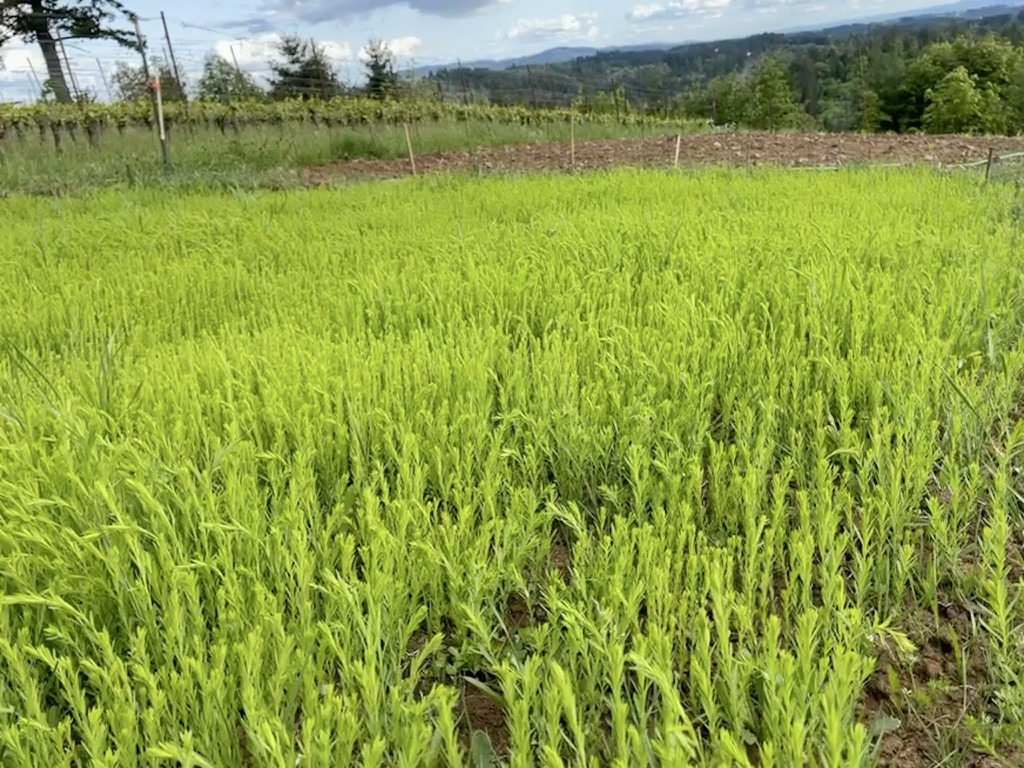

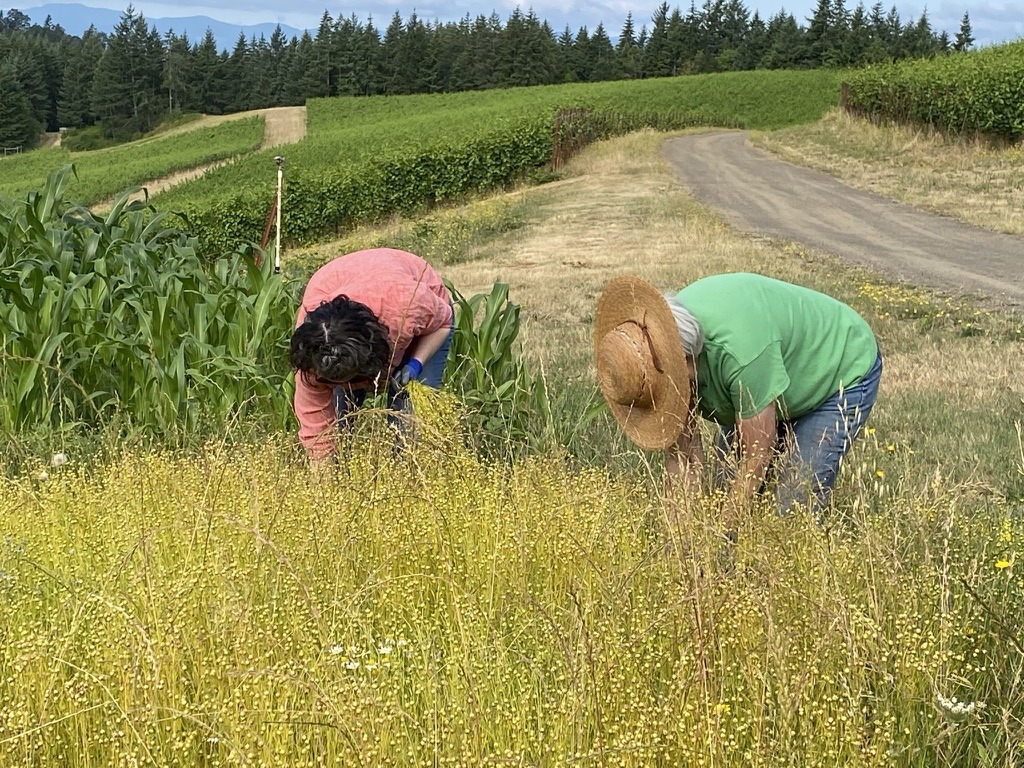
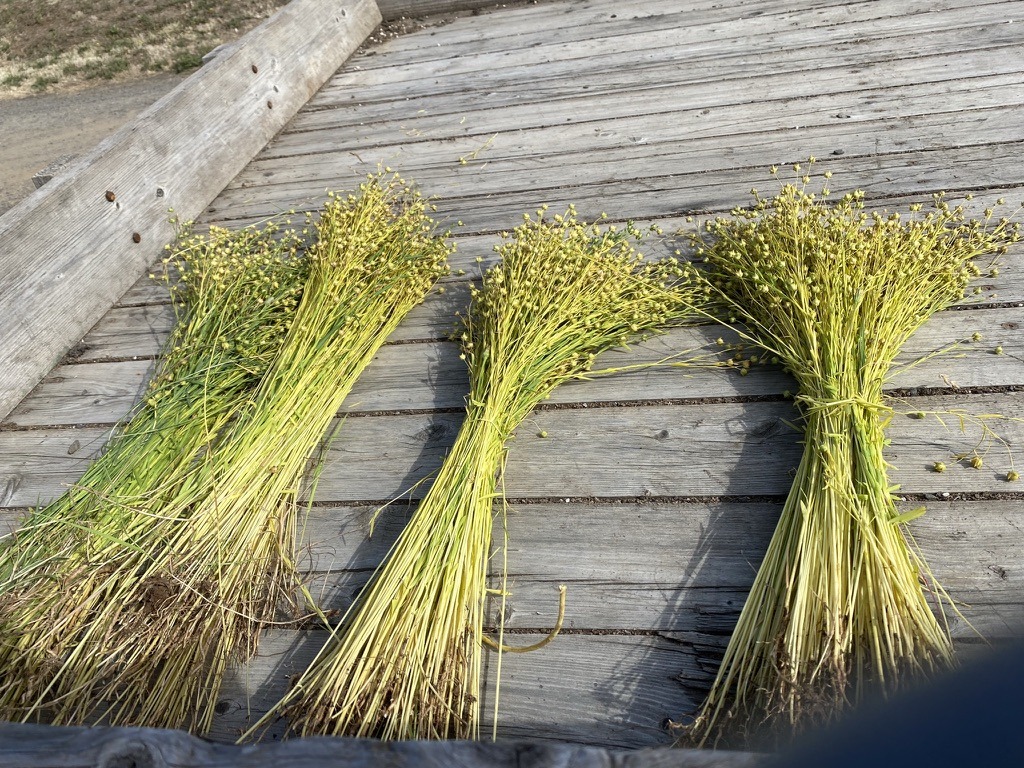
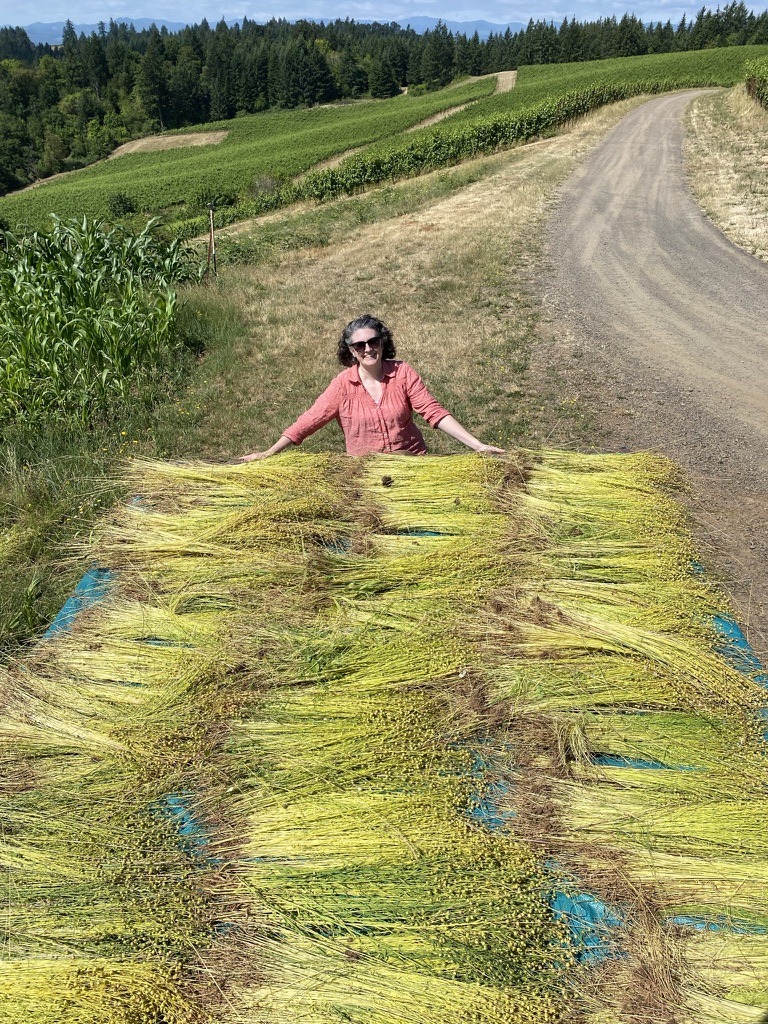
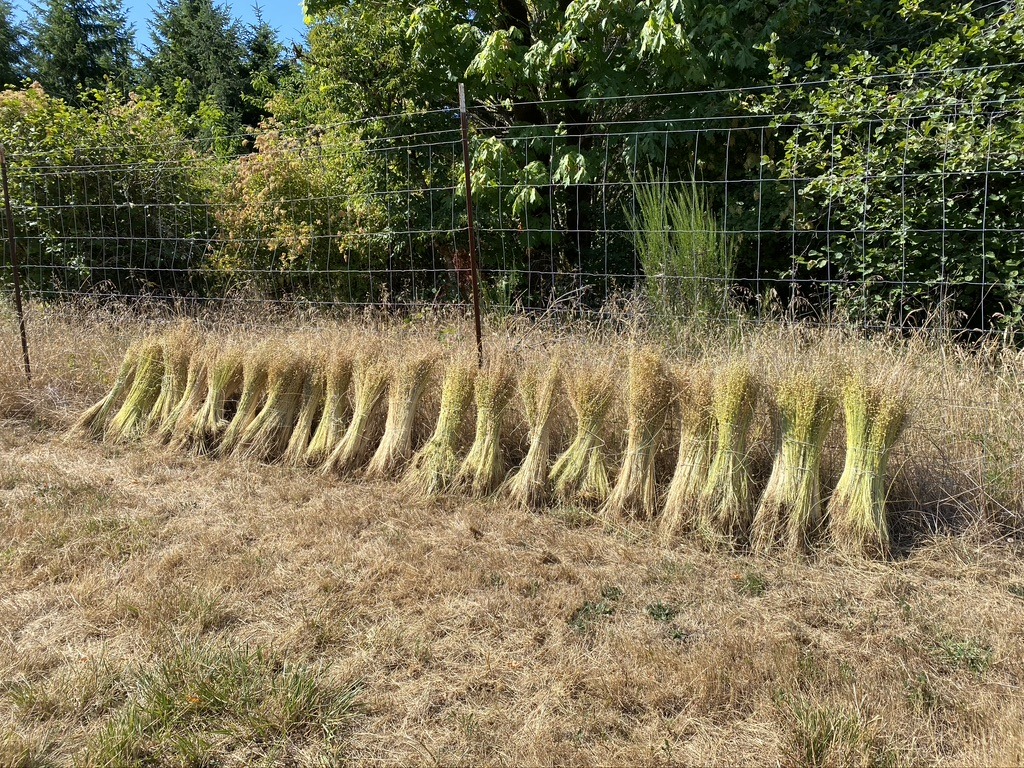
FLAX AND FAIRSING VINEYARD
In March of 2021, next to a block of our mature Chardonnay vines, nearly an acre of fertile Fairsing soil welcomed our first plot of fiber flax.
Tended by Meara McNally Butler, Fairsing’s General Manager, the variety of fiber flax chosen for planting is taller than flax grown for consumption (flax seed). Select flax cultivars are renowned for their tall, unbranched stalks, resulting in luxurious bast fiber of superior length.

THE PLOT THICKENS
With a section of land prepped for planting, two pounds of Linore fiber flax seed from the supportive folks at Fibrevolution were broadcast into the soil.
Within a week many seeds germinated and the fast 100 day growth cycle of our fiber flax was underway.
While oil seed flax and flax fiber are the same species, they are bred and grown for different purposes. For fiber flax, seeds are sown very close together to encourage straight vertical growth with little branching. Tight flax seeding yields taller stalks with longer, luxurious interior fibers.

OUT OF THE BLUE
By mid June, our flax showed it true colors and treated us to a thick, waving field of light blue blooms. At nearly two feet tall with beautiful flowering stems, the flax signaled a harvest within 30 days.
With the help of many Fairsing folks, our plot was hand-harvested the first week of July.
To harvest flax, the plant stem is pulled from the ground, bundled into swathes (or shooks), and dried before processing (for up to a year).
The optimal timing to harvest flax is after flowering has stopped and seeds inside bolls on the plant’s stem are immature.
After pulling, the seeds mature as the stalks are left to dry out. Once dried and ready for processing (or storage), the golden-colored flax seed bolls are shaken (rippled) from the straw stems and the seeds collected for the next planting.

WELL DRESSED
Extracting fiber from dried flax stems is a manual process referred to as “dressing”.
Dried flax bundles are first crushed (braking) to shatter and splinter the woody stalk exposing the fibrous interior.
The braked flax stalks are then scutched or vigorously whacked with a wooden blade to remove remaining stem material.
After scutching, the fiber is hackled or combed through sharp tines to ultimately separate shorter fibers (tow) from the longer desirable fibers (line).
Once thoroughly combed, the fiber is aligned lengthwise, readied for spinning into thread and subsequently woven into cloth.

SUSTAINABLE AND STRONG
Oregon’s Willamette Valley has excellent flax-growing conditions and linen production was once a significant industry (peaking during WWII).
Fabrics made of linen are valued for their light weight, beauty, durability, and strength (which increases by 20 percent when wet).
In addition to generating gorgeous textiles, flax is one of the most sustainable natural fibers in the world.
Flax requires little water over its fast 100 day growth cycle – thriving on morning dew and light rains.
As it grows, at times as much as two inches per day, flax captures and converts CO2 from the atmosphere.
After flax stems are pulled (harvested) the roots of the plant remain in the ground where they naturally enrich the soil. A win-win, from the ground up!

APPRECIATION
We extend our gratitude to the team with Fibrevolution.
Their mission is the revival and establishment of regional fiber manufacturing hubs focused on bast fiber (flax & hemp) located in strategic growing areas around the United States.
Fibrevolution is facilitating the establishment of a bast fiber industry in the USA from local fiber farmers through manufacturing to textile design, with a firm root in organic practices.
Learn more about Fibrevolution
Follow for additional Fairsing Vineyard sustainable initiatives in celebration of its 15th Anniversary



